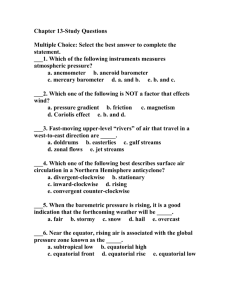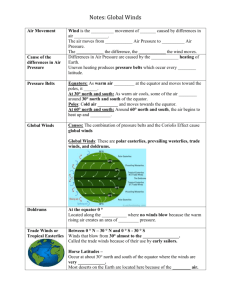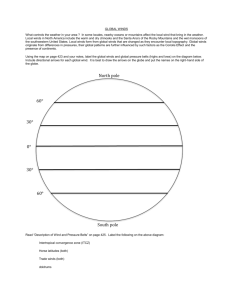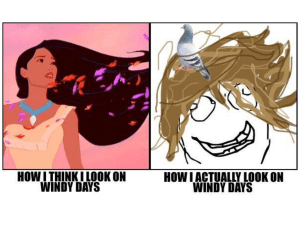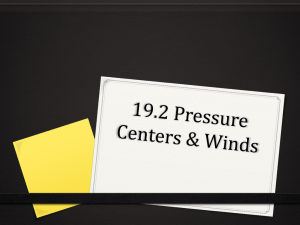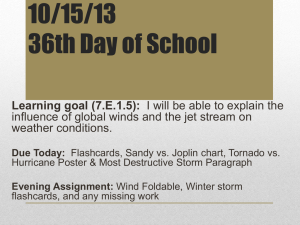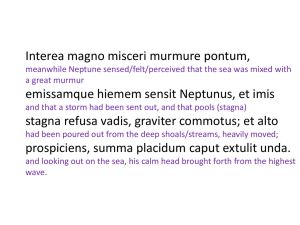Global and Local Winds
advertisement
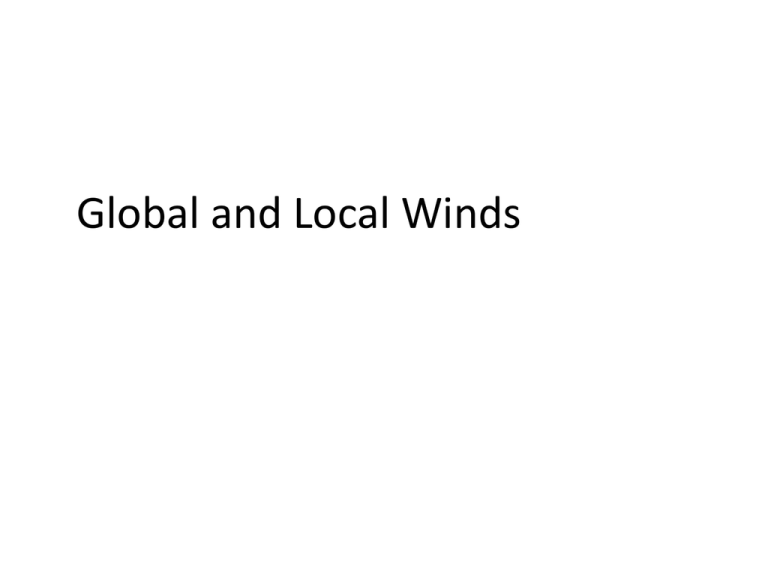
Global and Local Winds Why Air Moves • Winds blow from areas of high pressure to areas of low pressure. • The greater the pressure difference, the faster the wind moves. • Unequal heating of the Earth causes differences in air pressure. Warm less dense air rises at the Equator and the cold dense air sinks at the Poles. Pressure Belts • Air travels in circular convection cells rising and falling about every 30 of latitude. • Bands of high and low pressure, called pressure belts, separate the convection cells. • Cool, sinking air causes high pressure belts near 30 north and 30 south latitude. • Warm, rising air causes low pressure belts near 60 north and 60 south latitude.. The Coriolis Effect • As air travels north and south across the Earth, the rotation of the Earth beneath the moving air causes an apparent curving of the winds. • This apparent curving is called the Coriolis effect. • Diagram of the Coriolis effect. Global Winds • The combination of convection cells and the Coriolis effect produce patterns of air circulation called global winds. • These are polar easterlies, westerlies, and trade winds. Global Winds Don’t travel North and South because of the Earth rotating on its axis. • 4 Types of Global Winds – Doldrums – Trade Winds – Prevailing Winds – Polar Easterlies Polar Easterlies • Cold, but weak winds • Near the north and south poles • US weather is influenced by these • Cooling takes place between the 50-60 degree latitude as it approaches the poles Prevailing Westerlies • Strong winds • Located in the belt from 30-60 degrees latitude in both hemispheres. • Has an impact on the US weather Trade Winds • 30 degrees N & S of Equator • Calm winds, few clouds, little rain fall • Warm air rising from Equator cools and sinks • Also known as Horse Latitudes Doldrums •At the equator, surface winds are calm and weak. •Why would these winds be calm and weak? •When would this cause a problem? Jet Streams • Discovered in 1940’s • Can be found in the upper troposphere • Strong high speed and high pressure • Moves west to east across the US, moving storms


